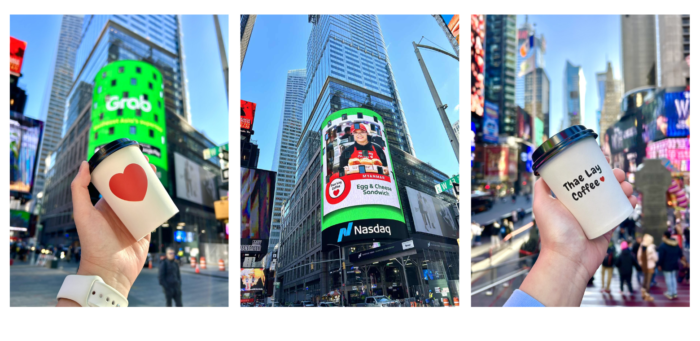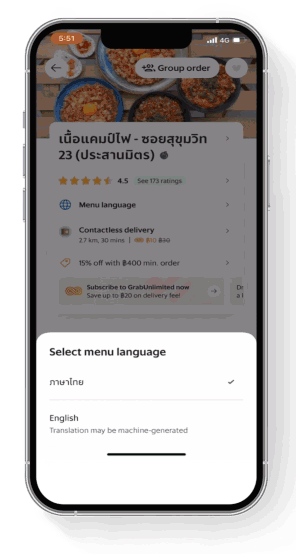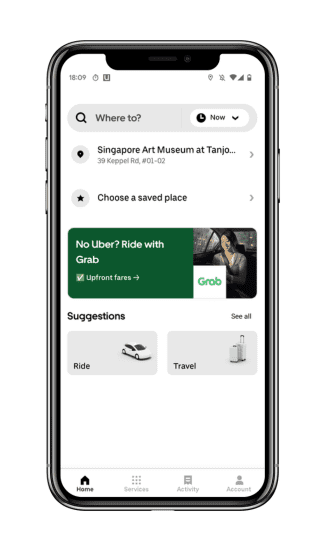Grab celebrates Southeast Asian F&B icons on Times Square billboard ahead of travel season
In November, Diana Tjhin, the owner of the Thae Lay Coffee chain in Myanmar, spent 48 hours making her way to New York City. She didn’t want to miss out on the chance to see her beloved brand shine bright on the iconic Nasdaq Times Square billboard, in front of thousands of passers-by.

Of the five million merchants and partners on Grab’s platform, a large number are small-to-medium F&B outfits, just like Thae Lay Coffee. They don’t have the same marketing and advertising budget as larger players, and typically would not advertise outside their home country.
Since its listing on the Nasdaq in 2021, Grab has been using the billboard space at Times Square to feature its driver- and merchant-partners that serve millions of consumers across Southeast Asia.
This year, Grab showcased 53 of its homegrown F&B merchant-partners that specialise in Southeast Asian culinary delights. These include Thong Smith’s boat noodles from Thailand, Bánh mì Huynh Hoa from Vietnam which serves up the popular baguette that is stuffed with Vietnamese pate, meat, and vegetables as well as Meatophum, that is known for the Cambodian delicacy—grilled fish with tamarind sauce.
Betting on tourism
It’s more than a gimmick to show Southeast Asian F&B brands to a global audience. North America is one of the top inbound tourism markets for Southeast Asia. As pent-up demand continues to drive global tourism, Grab has seen airport rides grow 49 per cent year-on-year in the third quarter this year, almost back to pre-Covid levels.
(Read more: Tourism is returning to Southeast Asia and Grab’s superapp is ready to serve travellers)
It was an opportunity for prospective users to get a glimpse of the power of Grab’s superapp ecosystem in Southeast Asia. Beyond ride-hailing services, Grab offers multiple business verticals including food delivery in a single app. The food deliveries segment reported an all-time high in Deliveries Gross Merchandise Value in Q3 2023.
More people are using Grab than ever before with the company reporting some 36 million monthly users in Q3 this year. The platform has since gained prominence among travellers exploring the region.
Serving travellers
Tourists are high-value customers that are potentially more willing to try out new dishes and spend more. This can translate to larger orders, leading to an increased average order value for merchants.
To support this, Grab has introduced merchant listings and menu translations in English across many key tourist cities in Southeast Asia for users to explore and order food with ease.

Meanwhile, the traveller homepage allows users based outside Southeast Asia to explore cities, Grab’s services and plan their journeys before they leave their countries. Available for 33 of the top cities tourists visit in Southeast Asia, travellers can search places of interest, explore a selection of cuisines and restaurants in the region and save them to a list.

Grab also has partnerships with WeChat, Uber and other popular apps that encourage their users to use Grab while in Southeast Asia. For example, Uber users that open the app while in Southeast Asia, will see a message directing them to Grab as a recommended way to travel in the region.

As travellers return to Southeast Asia, Grab aims to help users explore the region through its superapp offerings while boosting the income of its driver- and merchant-partners.
3 Media Close,
Singapore 138498